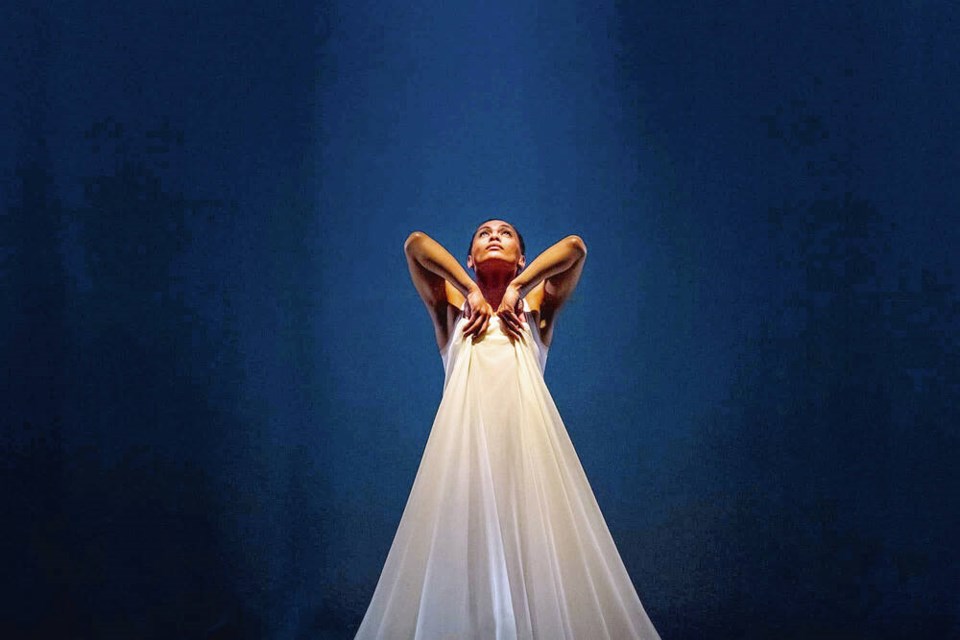OKAREKA DANCE COMPANY: MANA WAHINE
Where: McPherson Playhouse, 3 Centennial Sq.
When: Wednesday, March 27, 7:30 p.m.
Tickets: $46.25-$52.50 from the Royal McPherson box office (250-386-6121) or
Poetry, storytelling, and song each play a vital role in the customs and traditional practices of M膩ori culture. But thanks to the efforts of organizations like New Zealand’s Õk膩reka Dance Company, contemporary dance is becoming known as a viable artform for the Indigenous people of New Zealand.
The company, founded in 2007, is not the first homegrown New Zealand outfit to take its talents across the globe. Founder and artistic director Taiaroa Royal is duly committing to the task, however, by travelling through the U.S. and sa国际传媒 on an extensive tour celebrating the 10th anniversary of Mana Wahine, his all-female work that combines dance, theatre, and film.
The version of Mana Wahine (which translates, in M膩ori language, to mean strong women) coming to Victoria tonight has remained largely faithful to the original, Royal said. “The only thing that has changed are the dancers. But I don’t want them to be robot copies of the original dancers. I gave them leeway in the choreography to bring in their own essence, so they have ownership of the work.”
His cousin, T奴墨 Matira Ranapiri-Ransfield, was brought on board a decade ago for the creation of Mana Wahine, and she infused the work with her vast knowledge of traditional M膩ori song and dance, he said. Following the collaboration, Ranapiri-Ransfield has since been used in a variety of capacities for companies and organizations throughout New Zealand attempting to reconnect with M膩ori heritage. It’s a point of pride for Royal that Õk膩reka Dance Company was one of the first New Zealand companies to have a M膩ori “cultural advisor” play a key creative role in one of its productions.
“T奴墨 came to me with a couple of stories in 2011 about two of our ancestors who were powerful women, or mana wahine,” Royal said. “They were powerful women who saved their people from adversity. I always credit them because if it wasn’t for their bravery and their tenacity and courage, I probably wouldn’t be here today.”
Royal not only created Mana Wahine with women in mind, he used the legend of one of the country’s iconic female warriors, Te Ao-kapurangi, a notable 19th Century New Zealand tribal leader, peacemaker, and member of his family. “I wanted the work to be surrounded and enveloped in the female essence,” Royal said. “All the dancers are female, most of the creative team are female. The only three men were myself, choreographer Taane Mete, and our audio-visual designer Rowan Pierce. And we all called on our feminine side to help us through it.”
Historical accuracy is everything in M膩ori culture, so Royal avoided dipping into those waters by making Mana Wahine a largely contemporary piece. He used elements of haka (the ceremonial dance known to many outside of the M膩ori community for its association with the All Blacks, New Zealand’s national rugby team) and its presence was a way of offsetting the beauty of Mana Wahine with the aggressive facial expressions and raw physicality through with which dancers use haka to convey their message.
The end result is something unique and new — two key facets of New Zealand’s contemporary dance community, which is coming into its own by producing a rich, varied artform with many levels of self-expression. “Stories have many different iterations, depending on what part of the country you’re in or which clan or tribe you come from. To be able to retell the story to its truth is a huge challenge. I took the story and I found the deeper essence of it. In this case, that was strong women with integrity.”
Royal said Victoria audience members who take in Mana Wahine, which also includes bird songs unique to New Zealand, won’t need context to appreciate the piece. It appeals to all cultures, he said. “The reactions we’ve had in Denver and Phoenix have been the same as the reactions in Hawaii and New Zealand. It’s a universal work. Even though it is steeped in M膩ori culture and M膩ori content, because of how it’s crafted it has connections with many different races. Its a very special work in that sense. It crosses all races and sexes.”
There is a section during Mana Wahine that features a wall of remembrance, adorned with photos of women who have influence Royal’s life, from family members to former dancers with the company. As the Victoria performance takes place during Women’s History Month, the symmetry is not lost on Royal.
“It is not only about who is physically represented on stage, but it is also who is spiritually represented on stage. That really affects people, and jogs memories of women in their lives who have influenced them.”



